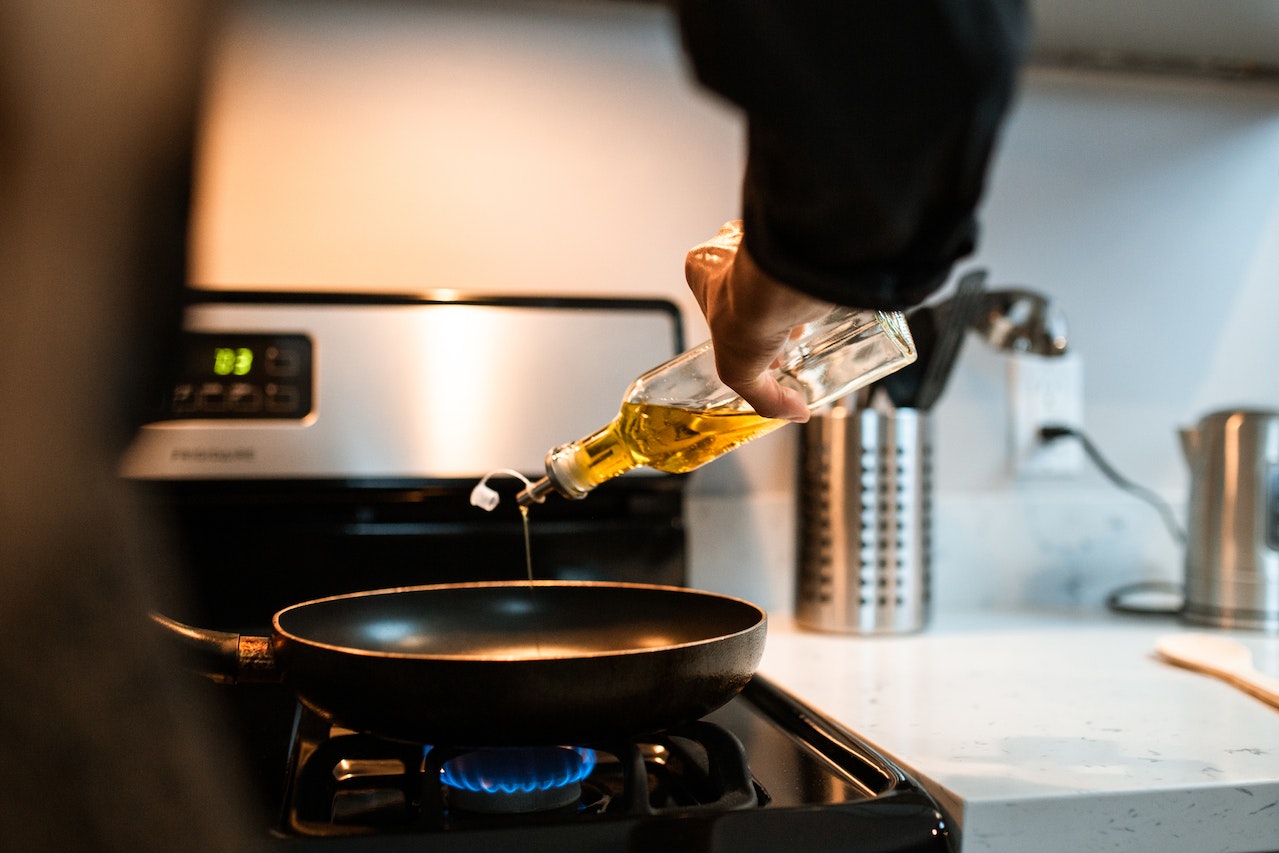
Why Your Cooking Utensils Might Be Making You Sick
Convenience in the modern age is a bit of a double-edged sword, don’t you think?
We’ve got cellphones that let us keep in touch with anyone, anywhere…but they also cut into our social lives. And, we’ve got easy access to prepared, pre-packaged foods which are actually harmful to our bodies.
It’s like anything made to add ease to our lives can somehow harm them in the same breath.
It’s kind of a mess, really. A big, unfortunate mess.
And, to add insult to injury, I’ve got to tell you some more sad news. That non-stick cookware you’ve been using? It might be a contributing factor to failing health.
Unless, of course, you stop using it and switch to something safer that is.
Who would have known trying to cook an egg without it getting stuck to the pan could have such ill consequences?
The Big Fat Problem With Non-Stick Cookware
The reason non-stick cookware is so problematic is because of the kinds of chemicals the cooking surfaces have been treated with.
Most notable is how these chemicals can eventually end up in the food you eat or in the air you breath, which is how they’ll severely impact your health down the road.
The truth is the chemicals giving your cookware that trademark slipperiness are actually fluorinated chemicals. And, if you didn’t already know, fluorine is a highly toxic gas possessing many known negative affects on health.
These chemicals are known as poly- and per-fluoroalkyl substances (PFAS). And, once they’re “freed” from their surfaces, they hang around in both your body as well as the environment for some time.
As you might guess, one of the notable effects of PFAS is their tendency to disrupt the body’s normal function.
This is why the EPA has identified byproducts of PFAS (PFCs) as “likely carcinogenic.”
The way PFAS are known to contribute to cancer is, after they’re heated up, they’ll release something known as perfluorooctanoic acid (PFOA).
This long-chain perfluorinated chemical has been associated with a myriad of seriously disruptive health problems.
Including:
- Infertility in women.
- Thyroid disease
- Organ damage
- Reproductive damage
Despite these known associations, they continue to be used in a long list of cookware (and other common household products).
Once these chemicals are released, you’re going to have a pretty tough time getting rid of them. It’s just a cold, hard fact.
Dr. Mercola made a pretty sound observation when he talked about the dangers in how these chemicals “persist” for a long time.
He writes:
“According to the CDC’s “Fourth National Report on Human Exposure to Environmental Chemicals,” published in 2009, 12 different PFCs were detected in Americans, including PFOA. According to the Agency for Toxic Substances & Disease Registry (ATSDR):
“Once in your body, perfluoroalkyls tend to remain unchanged for long periods of time. The most commonly used perfluoroalkyls (PFOA and PFOS) stay in the body for many years. It takes approximately four years for the level in the body to go down by half, even if no more is taken in.”
While there’s a dizzying array of chemical names in the PFAS groups, if an item is either non-stick, waterproof, or stain-resistant, it has some type of fluoride-impregnated coating that provides the slipperiness, and you can be virtually guaranteed it will be problematic.”
Worst of all is not just how these chemicals are supremely dangerous, but how the manufacturer’s know it and have continued to peddle these products to consumers.
Previously, a few studies had shown when these coatings are cooked at certain temperatures a series of toxic fumes were observed, including monofluoroacetic acid (MFA), which has been used as a chemical warfare agent and is deadly to humans in the smallest of doses.
Despite the realization their products are dangerous, manufacturer’s have continued to use these chemicals.
Even DuPoint Chemical (who introduced many of them into the market) has conducted a significant amount of research to demonstrate these findings, and still offers their products to the market!
The environmental watchdog organization known as the Environmental Working Group (EWG) wrote about Dupont’s extensive knowledge in their 2003 report “Canaries in the Kitchen: DuPont Has Known for 50 Years.”
They commented:
“DuPont acknowledges that the fumes can also sicken people, a condition called ‘polymer fume fever.’ DuPont has never studied the incidence of the fever among users of the billions of non-stick pots and pans sold around the world. Neither has the company studied the long-term effects from the sickness, or the extent to which exposures lead to human illnesses believed erroneously to be the common flu.”
It’s a pretty big oversight on their part, and I believe it would be in your best interest to avoid using any kind of cookware containing PFOAs.
So, What Should You Use Instead?
To be absolutely safe I would say ceramic or or enameled cast iron. Neither contain toxic chemicals and are totally inert.
Some might say aluminum, copper, or stainless steel.
I’m not going to say they’re not an option, but remember, many of them contain a variety of metals associated with certain health problems.
Hope that helps clear up some confusion and sets you on a path towards better health.
Talk soon,
Dr. Wiggy
www.HealthAsItOughtToBe.com



